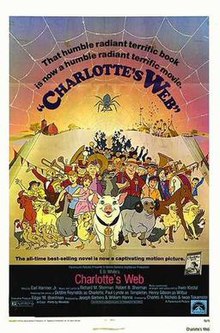
The original Shining Force on the Sega Genesis was my very first strategy RPG of which I have decent memories, despite not finishing it until the turn of the millennium. I had no idea that the tactics game had a traditional RPG prequel, Shining in the Darkness (changed slightly from the Japanese title of Shining and the Darkness), also for Sega’s sixteen-bit system. Fortunately, unlike with some later releases, Sega had the foresight to keep the programming code for rereleases, most recently as part of Shining Force Classics for iOS devices, making the inaugural Shining game playable for contemporary audiences. Has it aged well?
Shining in the Darkness occurs in the Kingdom of Thornwood, where the protagonist, son of a lost knight, allies with the monk-in-training Milo and the sorceress Pyra to explore a labyrinth and defeat Dark Sol, who has kidnapped the king’s daughter. For the most part, it’s a typical damsel-in-distress story, although there is decent background, even if the placement in the Shining series timeline is somewhat obscure. There are also occasional humorous scenes that Sega didn’t censor (like Nintendo would have), although a plot twist later on seems filched from a certain science-fiction franchise. The plot may have been “good for its time,” but never reaches excellence.
Unlike Nintendo, Sega largely didn’t bother with Bowdlerization of translated titles, with some occasional things that got past whatever censors there were such as a scene involving Pyra and her mother, and the dialogue is generally legible and free of error. However, the localization team put character and enemy names in all caps, and many of the latter are a bit on the Engrishy side such as “Lancerot.” There are also definite reminders of the game’s Japanese lineage in the form of the ending credits interposed with the endgame anime scenes, although these do have English subtitles. In the end, the translation was competent for its time, but far from perfect.
That leaves the gameplay to shoulder the burden, but lamentably, things don’t fare much better in that regard. Unlike its successor series, Shining in the Darkness is a first-person dungeon-crawler RPG, with simple exploration and conversation interfaces for the main town and castle, and the bulk of the game mechanics executed within the massive random encounter-infested labyrinth. At first, it’s just the protagonist whom the player names, although he ultimately receives two allies: the monk-in-training Milo, physically adept and skilled with healing magic; and the sorceress Pyra, physically weak but excelling with offensive magic.
Battles, as mentioned, occur randomly, although the rate of fights seems vastly inconsistent, at times being one encounter per map title, although later on, Pyra obtains a spell that can nullify combat with enemies whose levels are lower than those of the player’s party (said spell will fail if foes’ levels are higher than those of the main characters). The main character can only attack with his weapon, use a consumable item, or attempt escape (although the lead character, and the next lead one depending upon whether or not one or more luminary is dead), although his allies can cast MP-consuming magic with adjustable levels, good for different martial situations.
As in most traditional turn-based RPGs, the player inputs commands for each character, and they and the enemy exchange commands largely depending upon agility, although actual turn order can sometimes vary, even when battling enemies of the same type, although typically, Pyra then Milo take their turns, then the enemy, and finally the main hero. As usual, the option to escape doesn’t always work against higher-level adversaries, and eliminating all foes earns all living characters experience for occasional leveling and money to purchase new equipment and consumables. The whole party’s death leads to valkyries whisking them away to the town’s shrine for full revival, stealing half their money.
However, there are alternate courses of action to take in case the player doesn’t want to risk financial loss (although late in the game money becomes at best a nonissue), such as using an Angel Wing or Pyra’s Egress spell to leave the labyrinth for recovery and shopping in town. The iOS incarnation ups the ante with three cloud save slots that players can make any time, even in battle, with most gamers likely wishing to reload their last progress recorded in this fashion instead of dying and losing money. Another feature present in the iOS version is the ability to rewind gameplay by fifteen seconds, although since fights can take a while, there is an off-chance that players might find themselves stuck in the same round of command execution, and there is a wait time in between such rewinds.
There are other quirks like the ability to use certain weapons as items, the main hero’s most powerful sword, for instance, able to unleash lightning upon all foes, not to mention rings that can cast magic yet crack and shatter after enough use, repairable by the trader whose shop opens late-game. At said storefront, players can give Mithril Ores or Dark Blocks occasionally found in the labyrinth (I snagged one of the former from a random battle, too) and money to forge equipment, although the final equipment for the main hero is more powerful than armaments obtained through crafting, and some items the player can craft for him Milo can use, as well, and end up being his most powerful outfits.
That the game has to narrate every action that occurs in battle somewhat bogs down combat, and players may find themselves liberally reloading cloud saves in case things go awry, although doing so reveals occasional issues with the programming, namely the potential to encounter exactly the same set of foes before the reload. Shining in the Darkness also doesn’t indicate the effects of items or spells, or indicate that certain weapons the player can use to cast spells, and there is an enemy-infested stretch (with some occasional “fixed” encounters with powerful foes) between the only late-game labyrinth recovery point and the final battle that naturally has multiple forms. In the end, there are some positives to the game mechanics, but the negatives very much outweigh them.
The game’s control also has more cons than pros, with the latter including of course the contemporary enhancements like cloud saving, and the ability to use a spell or item to egress instantly from the labyrinth. However, the negatives include the constant barrage of dialogue and confirmations when shopping, the often-terrible direction on how to advance the central storyline, the lack of descriptions for spells and items, the ease of getting lost in the labyrinth, the poorly-implemented teleportation system using two halves of a medallion in golden fountains, and the inability to see how equipment raises or lowers stats before purchasing it. Ultimately, the first Shining game is far from user-friendly.
Pretty much the biggest redeeming aspect of Shining in the Darkness is its sound, with two solid dungeon tracks and battle themes, though they lack variety, and some audio accompanying combat actions isn’t convincing. Every character, moreover, has a “voice” rising or falling in pitch based on who’s talking, and there are other good tracks such as the overworld theme, the three variations of the town music, and the beautiful music that accompanies balcony traversal between different sides of a few of the upper floors. However, the Genesis’s audio capabilities were somewhat inferior to that of its sixteen-bit rival by Nintendo at the time, although the aurals still remain a zenith of the first Shining title.
There are some visual aspects Shining in the Darkness did better than its sixteen-bit Nintendo contemporary, such as the general anime style including full-bodied character sprites with decent proportions, lip animation, and other movement to accompany spoken dialogue, although there is a heavy degree of pixilation that the iOS version doesn’t smooth out. The game also remains strictly in the first person, with the player only briefly glimpsing Milo and Pyra before they join (and never the main hero, except on the Don Bluth-esque North American cover art). Moreover, the first Shining entry pretty much writes the book on reskinned enemies, with lazy animation in the form of jiggling and mirroring when executing commands. The graphics aren’t an eyesore, but definitely could have been better.
Finally, the first Shining is beatable in around a day’s worth of playtime, with little in the way of lasting appeal save for minor plot variations depending upon whom the player has rescued from the labyrinth.
Overall, Shining in the Darkness wasn’t a luminous start for the Sega franchise, given negatives like the slow battles, weak control, hackneyed storyline, and lack of lasting appeal. However, there are occasional bright spots such as the cloud saving present in the iOS version, the great soundtrack, and the nice anime style done better by Sega than Nintendo during the sixteen-bit era. Regardless, unless players wish to experience a piece of RPG history (and contemporary gamers can play for free with ads or pay $5 to eliminate them as well as in the two Genesis Shining Forces included in the iOS collection), there isn’t much reason to play, and mainstream audiences aren’t missing much.
This review based on a playthrough of the version included with Sega Shining Classics on an iPad Pro, with ads disabled through payment.
The Good:
+Cloud saving makes game more playable.
+Story was okay for its time.
+Great soundtrack.
+Okay visuals.
The Bad:
-Battles feel slow and generic.
-Weak control.
-Hackneyed plot.
-Little reason to go through again.
The Bottom Line:
A classic that hasn’t aged well, despite contemporary conveniences.
Score Breakdown:
Platform: iOS
Game Mechanics: 3.0/10
Controls: 2.0/10
Story: 3.5/10
Localization: 5.0/10
Music/Sound: 7.5/10
Graphics: 5.5/10
Lasting Appeal: 1.5/10
Difficulty: Inconsistent
Playing Time: ~1 Day
Overall: 4.0/10



















